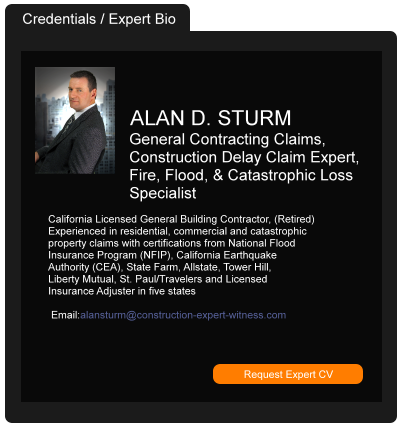Environmental and Regulatory Law Update: New Federal and State Rulings
April 19, 2022 —
Anthony B. Cavender - Gravel2GavelThe first quarter of 2022 has yielded a number of decisions, reversals and agency adjustments worth note.
FEDERAL CIRCUIT
U.S. Court of Appeals for the D.C. Circuit – Food & Water Watch v. Federal Energy Regulatory Commission
On March 11, 2022, the court decided the FERC case. On December 19, 2019, the Commission issued a Certificate to Tennessee Gas Pipeline and determined that a “modest expansion” and upgrade of the existing 11,000-mile natural gas pipeline would have no significant environmental impact. However, one of the Commissioners filed a partial dissent, arguing that the Commission’s treatment of the climate change impacts was inadequate. A petition for review was filed, and now the court has decided that the Commission erred in not accounting for the indirect effects of the expansion, namely the downstream emissions of greenhouse gas generated by the pipeline’s delivery of the gas to its customers. Consequently, NEPA’s requirement that a rigorous environmental assessment be made before the authorization was granted was violated. However, the court decided against vacating the Commission’s orders, which would have had a “disruptive effect” on the project which is, or soon will be, operational.
Read the court decisionRead the full story...Reprinted courtesy of
Anthony B. Cavender, PillsburyMr. Cavender may be contacted at
anthony.cavender@pillsburylaw.com
Creeping Incrementalism in Downstream Insurance: Carriers are Stretching Standard CGL Concepts to Untenable Limits
October 17, 2023 —
Eric M. Clarkson - Saxe Doernberger & VitaIn the construction sector, the importance of closely vetting downstream parties’ insurance has never been more critical. The markets have been hardening with no seeming end in sight and carriers are looking for any way to get an edge. Owners and general contractors need to be on the lookout for ever broader carrier-specific expansions of standard insurance provisions that are perilous for risk transfer. We are seeing more and more terms that go against the intent of ISO standard which is what is almost universally required in construction contracts.
One area where carriers are deviating from standard concepts is within pre-existing injury or damage exclusions in Commercial General Liability (“CGL”) policies. It is almost a universal requirement that downstream parties provide additional insured coverage to owners and general contractors on ISO form CG 00 01. Generally, ISO standard language provides coverage for sums the insured becomes legally obligated to pay as damages because of bodily injury or property damage. One of the few main requirements to trigger coverage is that the injury or damage must occur during the policy period. Over the years, ISO standard language has evolved to exclude injury or damage if an insured or certain persons knew that it had occurred before the policy period. Additionally, injury or damage is deemed to have been known to have occurred under certain circumstances.
Read the court decisionRead the full story...Reprinted courtesy of
Eric M. Clarkson, Saxe Doernberger & VitaMr. Clarkson may be contacted at
EClarkson@sdvlaw.com
Seattle Expands Bridge Bioswale Projects
May 11, 2020 —
Jim Parsons - Engineering News-RecordThe success of engineered systems to capture stormwater runoff from Seattle’s Aurora Avenue Bridge has spurred construction of additional measures that proponents say will increase total filtering capacity by another two million gallons per year.
Jim Parsons, Engineering News-Record
ENR may be contacted at ENR.com@bnpmedia.com
Read the full story... Read the court decisionRead the full story...Reprinted courtesy of
Brown Paint Doesn’t Cover Up Construction Defects
April 25, 2012 —
CDJ STAFFIn a decision that describes the case as illustrating “the perils that real estate brokers and their agents assume when acting as a dual listing agent to both the buyers and sellers of the same house,” the California Court of Appeals has issued a decision in William L. Lyon & Associates v. The Superior Court of Placer County. Lyon & Associates sought summary judgment to dismiss the claims of the Henleys who bought a home in a transaction where a Lyon agent represented both sides.
�The prior owners of the home, the Costas, had used a Lyon agent in purchasing their home. When they later sought to sell it, that agent “became aware of some of the house’s defects and problems.” In response, the Costas sought the help of another agent, Connie Gidal, also of Lyons & Associates. Photos taken in the presence of Ms. Gidal show defects of the paint and stucco. The Costas also took the step of painting the house dark brown. During the sale process, “rain caused many of the painted-over defects to reappear.” The Costas “purchased more dark brown paint and covered up the newly visible damage prior to inspection by the Henleys.”
�With the damage concealed, the Henleys bought the home in May 2006. The agreement with Lyons & Associates noted that “a dual agent is obligated to disclose known facts materially affecting the value or desirability of the property to both parties.” Escrow closed on May 9, 2006. The contract with the broker included a two-year limit on the time to bring legal action.
�The Henleys moved in during June 2006, and “began to discover construction defects that had been concealed by the Costas.” In addition to the painted-over stucco problems, the Henleys found that the Costas had “installed quartzite stone overlays on the backyard steps in a manner that caused water intrusion on the house’s stucco walls.”
�In May 2009, the Henleys sued the Costas, Ron McKim Construction, Lyons & Associates, and Ms. Gidal. Their complaint alleged that Lyons & Associates had committed breach of contact, negligence, fraud, breach of fiduciary duty, and negligent nondisclosure in connection with the construction defects. The Costas named Lyons in a cross complaint. Lyons moved for summary judgments on the grounds that the two-year statute of limitations had expired before the complaint and cross-complaint were filed. Both the Henleys and the Costas opposed this claim. The court denied the motion and Lyons appealed.
�The appeals court upheld the denial, noting that the both California Supreme Court decision and later action by the legislature compels real estate brokers and salespersons “to conduct a reasonably competent and diligent visual inspection of the property offered for sale.” The court noted that under California law, brokers have responsibilities to both sellers and buyers. The section of law cited by Lyons applies to seller’s agents. The court rejected the contention by Lyons that they were “cooperating brokers.” The Henleys were “not constrained by the two-year statute of limitations.”
�Lyons contended that even if California’s statute did not apply, there was a contractual limit of two years. The court also rejected this, agreeing with the Henleys that “the two-year limitation period must be extended by the discovery rule.”
�The court noted that “Lyon & Associates may not reap the benefit of a shortened contractual limitation period when its own alleged malfeasance contributed to the delay in the discovery of the buyer’s injury.” The court found that the Henleys could proceed with their breach of contract claim, because, “when a breach of contract is committed in secret, such as the intentional nondisclosure of a real estate broker regarding a previously visible construction defect, the contractual limitations period is properly held subject to the discovery rule.” The court felt that the interpretation favored by the California Association of Realtors would “halve the applicable statute of limitations period.”
�In addition to rejecting Lyon request for summary judgment on the claims made by the Henleys, the court also rejected the request of summary judgment on the claims made by the Costas, concluding that neither claim is time-barred. Costs were awarded to both the Henleys and Costas.
�Read the court’s decision…
� Read the court decisionRead the full story...Reprinted courtesy of
“Bound by the Bond”
September 02, 2024 —
Daniel Lund III - LexologyA New York trial court granted judgment in favor of a performance bond surety on a construction project, based upon the failure of the claiming party to abide by the terms of the bond.
The “AIA Document A312” bond form – described by the court (quoting surety law authority) to be “one of the clearest, most definitive, and widely used type of traditional common law ‘performance bonds’ in private construction” – contains various procedures which must be honored as a “condition precedent to an action to recover” on the bond/against the surety. One of those prerequisites is a “declaration of default” concerning the contractor principal (here, a subcontractor).
The case involved the construction of an 85-story skyscraper in midtown Manhattan, and the performance of the subcontract for the building’s superstructure. The bonded contract was at a value of approximately $25,000,000 and obligated the sub to provide a performance bond “in a form similar to the [A312 bond],” and which was otherwise satisfactory to the obligee/construction manager.
Read the court decisionRead the full story...Reprinted courtesy of
Daniel Lund III, PhelpsMr. Lund may be contacted at
daniel.lund@phelps.com
Governor Inslee’s Recent Vaccination Mandate Applies to Many Construction Contractors and their Workers
September 13, 2021 —
Brett M. Hill - Ahlers Cressman & Sleight PLLCThis month Governor Jay Inslee enacted COVID vaccination requirements that apply to certain construction contractors and their workers in Washington state. Inslee’s vaccine proclamation becomes effective October 18, 2021 and requires construction contractors, subcontractors, and their workers to be fully vaccinated to perform work onsite on certain covered projects.
The following are types of covered projects where the vaccine mandate applies:
- State agencies: All contractors working at projects for Washington state agencies (including WSDOT, DES, DNR, etc.) if the work is required to be performed in person and onsite, regardless of the frequency or whether other workers are present. The vaccine mandate applies to indoor and outdoor settings and there is no exemption even if social distancing requirements can be met.
- Education/Higher Education/Child Care: All contractors performing work onsite for K-12, higher education (community colleges, technical colleges, and 4-year universities), child care and other facilities where students or persons receiving services are present. New and unoccupied projects are exempt but it does apply to public and private projects.
- Medical facilities: All contractors performing work at a “healthcare setting” where patients receiving care are present. “Healthcare setting” is defined as any public or private setting that is primarily used for the delivery of in-person health care services to people. “Healthcare setting” includes portions of a multi-use facility, but only the areas that are primarily used for the delivery of health care, such as a pharmacy within a grocery store. Additional information is on the state’s Q&A page.
Read the court decisionRead the full story...Reprinted courtesy of
Brett M. Hill, Ahlers Cressman & Sleight PLLCMr. Hill may be contacted at
brett.hill@acslawyers.com
Difference Between a Novation And A Modification to a Contract
May 10, 2022 —
David Adelstein - Florida Construction Legal UpdatesIn contract law, there are two doctrines that have similarities but are indeed different. These doctrines are known as novation and modification. There are times you may want to make arguments relative to these doctrines because they are important for your theory of the dispute. Thus, you want to make sure you understand them so you can properly plead and prove the required elements to substantiate the basis of the theories. Understanding the elements will help you understand the evidence you will need to best prove your factual theories.
A novation is essentially substituting a new contract for an old contract.
“‘A novation is a mutual agreement between the parties for the discharge of a valid existing obligation by the substitution of a new valid obligation.’” Thompson v. Jared Kane Co., Inc., 872 So.2d 356, 361 (Fla. 2d DCA 2004) (citation omitted). To prove a novation, a party must prove four elements: “(1) the existence of a previously valid contract; (2) the agreement of the parties to cancel the first contract; (3) the agreement of the parties that the second contract replace the first; and (4) the validity of the second contract.” Id. at 61. Whether the parties consented to the substitute contract can be implied from the factual circumstances. Id.
Parties are more familiar with a modification because it is not uncommon that parties may agree to modify contractual terms. The contract remains in effect but certain terms or obligations are modified. For example, a change order to a contract is a modification.
Read the court decisionRead the full story...Reprinted courtesy of
David Adelstein, Kirwin Norris, P.A.Mr. Adelstein may be contacted at
dma@kirwinnorris.com
New York Federal Court Enforces Construction Exclusion, Rejects Reimbursement Claim
August 03, 2020 —
Eric D. Suben - Traub LiebermanIn Crescent Beach Club, LLC v. Indian Harbor Insurance Company, 2020 WL 3414697 (E.D.N.Y. June 22, 2020), the district court considered application of a CGL policy issued to a property owner containing the following exclusion:
"This policy does not apply to any ‘bodily injury’, ‘property damage’, ‘personal and advertising injury’, or any other loss, cost, defense fee, expense, injury, damage, claim, dispute or ‘suit’ either arising out of, or related to, any construction, renovation, rehabilitation, demolition, erection, excavation or remedition [sic] of any building and includes planning, site preparation, surveying or other other [sic] construction or development of real property. This exclusion, however, shall not apply to routine maintenance activities."
Plaintiff in the underlying action alleged injury while engaged in construction work at the insured’s premises. The information the insurer received was conflicting as to whether plaintiff was demolishing a pergola (excluded) or merely removing vines (not excluded). The insurer reserved its rights accordingly.
At his deposition in the underlying action, the plaintiff testified he was in a manlift performing demolition at the time he was injured. The insured’s property manager also testified that the pergola was being demolished. Approximately one month after the depositions, the insurer denied coverage based on the exclusion.
Read the court decisionRead the full story...Reprinted courtesy of
Eric D. Suben, Traub LiebermanMr. Suben may be contacted at
esuben@tlsslaw.com


































































